Tips on Restriction Digests: Designing a Restriction Screen
Restriction digests are the cornerstone of many techniques. Here are some great tips on setting up and troubleshooting them.
Join Us
Sign up for our feature-packed newsletter today to ensure you get the latest expert help and advice to level up your lab work.

Restriction digests are the cornerstone of many techniques. Here are some great tips on setting up and troubleshooting them.

After a late night transformation you realise you have forgotten to make any plates. Should you use the old stash of amp plates you found in the back of the cold room?
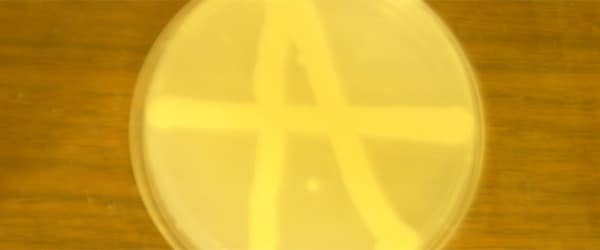
Resistance to the antibiotic ampicillin is commonly used as a selection marker for plasmids in gene cloning and protein expression in E.coli and other bacteria. While it can be incredibly useful tool, there can be problems using this selection marker that you need to be aware of if if you plan on using it. This…

Antibiotics are used in a wide range of techniques in molecular biology including molecular cloning and are important for treating pesky mycoplasma contamination in cell cultures. They can also be used to maximize your plasmid yields by reducing protein synthesis, in certain circumstances. The aim of this post is to provide an easy reference to…

The Phobia of RNases My first experience of troubleshooting in vitro transcription came when I was synthesizing RNA In-Situ Probes for the first time. A lab mate ominously warned me that I had just returned to lab after a bout of flu and that meant I’m a walking talking factory of RNases. I went ahead…
Overnight ligations are inconvenient — especially when they fail. Luckily, there’s a straightforward way to faster DNA ligations. This article highlights the secret ingredient to faster ligation reactions and offers some tips and caveats on its use. For a general overview of DNA ligations, see here and here. Buy a Quick Ligation Kit The most…

What do DNA mini preps and protein immunoprecipitation experiments have in common? They start differently, but they end with the same, critical stage – elution. But what exactly is elution, and what is the point? The Terminology First, let’s start with some basic terminology: Elution – extracting one material from another by washing with a…

Cloning Strategies – a Whole Lot of Options to Choose Molecular cloning has come a long way from simple restriction digestion-ligation cloning strategies to a large number of highly efficient alternatives. Broadly classified, cloning techniques can be divided as sequence dependent and sequence independent strategies. Sequence-dependent strategies are based on restriction digestion-ligation techniques or site-specific…

Introduction Did you know that the idea of using genetic engineering to ameliorate certain human diseases was viewed as ‘science fiction’ only 10 short years ago? While cell mutagenesis studies and genetic knockout experiments were feasible before genetic engineering, they were not very reliable. Indeed, due to the random and imprecise nature of these older…
Next-generation sequencing (NGS) has ushered in a new era of understanding of both the inner workings and the function of the genome. NGS allows researchers to look at traits—including diseases—that are linked to differences or mutations in an individual’s genes. Since only about 1% of the human genome constitutes genes that code for proteins, several…

Probing Nucleic Acid-Protein Interactions with EMSA The electrophoretic mobility shift assay (EMSA) is a powerful technique for detecting specific-binding of nucleic acid-protein complexes. Over the past 30 years, EMSA has been the “go to assay” to investigate the qualitative interactions between nucleic acids (DNA or RNA) and nucleic-acid binding proteins. Through the use of radio-labeled…
For many decades, the only way to detect sepsis – bacterial growth in blood – was isolating the bacteria and growing bacterial colonies on a special medium. This was done by first spinning down the blood, which brought the blood cells and bacteria into the pellet. The pellet was spread on a blood agar plate…

Have you ever wished you could snag individual strands of DNA or RNA with a lasso? Or look at them one by one, figuring out exactly where they are or what they are doing? Fortunately, there are techniques that exist to label nucleic acids for their visualization and purification! Nucleic acids can be labeled at…

RNAseq libraries, also called whole transcriptome shotgun sequencing libraries, provide a snapshot of cellular processes. This allows the researcher to gain information regarding changes in transcriptome in response to environmental changes, during disease, or after a drug application. RNAseq libraries also allow for the detection of mRNA splicing variants and SNPs. RNAseq libraries have virtually…
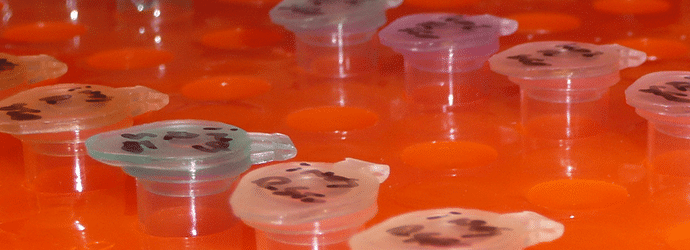
If you plan to work with purified DNA in the lab, it’s likely that you will use a commercial DNA extraction kit to isolate and purify your DNA of interest. With so many types of kits available, it can be a major challenge to choose the best one to use when working with an unfamiliar…

You are thinking of trying out RNAscope®. After all, RNAscope® holds promise for increasing the sensitivity and specificity of your in situ hybridization. Yet, getting started can be a little overwhelming with the numerous kits and reagents available in the RNAscope product line. Here’s an overview of your options to help you navigate to the…

For most molecular biology purposes, DNA is thought of as a string of nucleotides running from 3’ to 5’, and the corresponding mRNA sequence is complementary to this DNA string. However, visualizing this quirky DNA structure for what it is – two antiparallel strands joined together – it quite important for many applications, such as…

What Is Alternative Polyadenylation? Processing of mRNA and its regulation plays a fundamental role in gene expression. As science progresses, alternative polyadenylation takes center stage in the undercurrents of gene expression. 1,2 Polyadenylation is part of the pre-mRNA maturation process and involves polyadenylation of the 3’ end of the emerging RNA. This process happens to…
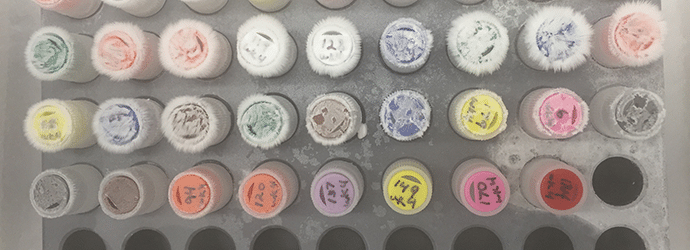
What Are Non-Coding RNAs? What was once considered “junk” may end up being the most important part of our genome. Non-coding RNA (ncRNA) is RNA that is transcribed from DNA but diverts from the “central dogma” because it does not code for proteins. NcRNAs are ubiquitous in eukaryotes: while 90 percent of eukaryotic genomes are…

There are many cloning methods that do not require restriction enzymes or ligases. Read below to learn about how to achieve seamless cloning results via Topoisomerase cloning, SLIC, and Gibson. Method #1: Topoisomerase Technology Topoisomerase technology requires no special primers and no ligases – it is as easy as cloning comes. This technology is based…

Over the past few decades molecular biologists have developed procedures to simplify and standardize cloning processes, allowing vast arrays of artificial DNA structures to be more easily assembled. Are you familiar with all the cloning options out there? Let’s look at five different cloning methods you can use to get your construct. At the end…

Ligation independent cloning (LIC) is an easy and effective method to ensure successful cloning, all without the need for ligation. As easy as the technique is, designing primers can be a bit tricky. In this article, we will present a quick overview on primer design for ligation independent cloning.

The use of viral delivery systems to transduce cells for gene and protein investigations has become prominent over the last 20 years. In particular, the use of lentiviral vectors permits stable expression of your gene of interest. This is all possible with a little bit of nucleic acid magic. Lentiviruses (a genus of retrovirus) express reverse…

Manipulating the genes of organisms is crucial for studying their functions. In times before genetic engineering, scientists would shoot bacteria with X-rays or expose them to destructive chemicals until spontaneous mutations would arise. Fortunately, current methods are more sophisticated and less torturous. Researchers now use more directed techniques to introduce mutations. There are several ways…

Isolating RNA from either Drosophila larvae or adult heads can seem a bit daunting, primarily due to the presence of the cuticle. The cuticle is a protective exoskeleton comprised of insoluble collagens, cuticlins, glycoproteins, and lipids. While it may take some force to remove the cuticle, you can do this easily and without compromising your…

If you have any training in genetics, chances are that during the course of your education you ran into those funny little sequences called microsatellites. These are repeated tandem motifs 1-6 nucleotides long, scattered all over our genomes. These used to be called “junk DNA,” because researchers thought that the repeats served no purpose. Nowadays,…

Studying DNA–protein interactions is an important aspect of molecular biology. Researches use a variety of methods to study these like the chromatin immunoprecipitation (ChIP) assay, electrophoretic mobility shift assay (EMSA), DNA pull down assay, luciferase reporter assay, filter binding assay, yeast one hybrid system, etc. Another interesting assay that helps investigate DNA–protein interactions is the…

Thinking about studying extracellular RNA and in particular microRNA? Read on for some great tips for extracting circulating microRNA.
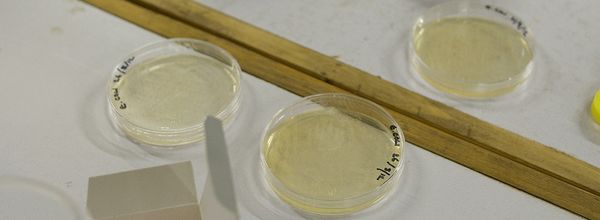
The first time I did a transformation was when I worked with site directed mutagenesis. I cloned a protein sequence into the p15TVL vector, created my mutants (but that’s another story), and was finally ready for the next step: transformation and expression of my desired protein. Little did I know that my enthusiasm would fall…
The use of restriction enzymes to characterize DNA has been popular since the 1970s. Today, this “old school” technique is still one of the easiest and fastest ways to assess DNA sequences. Like most lab reagents, restriction enzymes can be fickle and you should bear a few things in mind when using them. Generally, sticky-ended enzymes have greater…
Most of us are aware of genetic engineering systems like Cre-Lox, TALENs, Zinc finger systems, and of course, CRISPR-Cas9. These are all examples of CSSR- Conservative Site-Specific Recombination. We use these site specific recombinases routinely, but do we really know about them or what the future hold for these tools? It turns out that CSSR…
The amount of data requiring long-term storage is growing and accelerating. Current long-term digital storage technology cannot keep up. Imagine roughly 2.5 QUINTILLION bytes of data being created everyday in this world1–2 as more computers and network infrastructure come online. For average users, a long-term storage solution is probably not an issue. However, organizations and…
We use fluorescent in situ hybridization (FISH) techniques routinely to detect DNA or RNA sequences in tissues, but what about micro RNAs (miRNAs)? No worries, FISH is now optimized to meet the challenge. To help you get going with the method, here’s what you need to know. The first thing that comes to mind when…

Engineering a mutation or overexpressing a recombinant protein to study and characterize its function in mammalian cells is no easy task. Luckily, Chinese hamster ovary (CHO) cells, which have been a mainstay in the lab since the 1950s, represent a relatively easy mammalian model system to engineer. There are several methods to choose choose from…
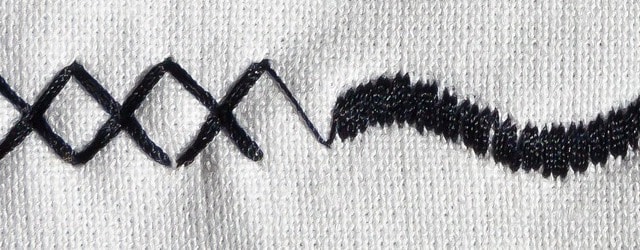
The polymerase chain reaction (PCR) is the backbone of many lab techniques. In short, it allows for the exponential amplification of a specific segment of DNA. Through the use of primers encoding restriction enzyme sites, these amplified fragments are used in downstream cloning procedures, usually leading to the insertion of one, maybe two, PCR fragments…
Every bio- scientist who wants to analyze DNA knows that the process begins with the extraction of DNA from cells of interest. These cells could be RBCs, parasites, or bacteria to name a few. Furthermore, there are various DNA extraction methods1 to choose from depending on sample type, downstream analysis, and so forth. Many scientists…
DNA Purification We all use our favorite techniques for DNA cloning, such as Gibson assembly, TOPO cloning, ligation independent cloning (LIC), and TA cloning. However, DNA purification methods themselves, haven’t changed all that much since the 90’s. Historically, the introduction of phenol extraction in 1956, to purify nucleic acids from rat liver, rapidly replaced previous…

A while back, one of our readers asked for a quick and easy and quick way to extract plasmids from transformed Agrobacterium tumefaciens cells. They pointed out that plasmid copy number is often low in Agrobacterium and that yield can be poor in alkaline base miniprep protocols. The short answer is that there is no…
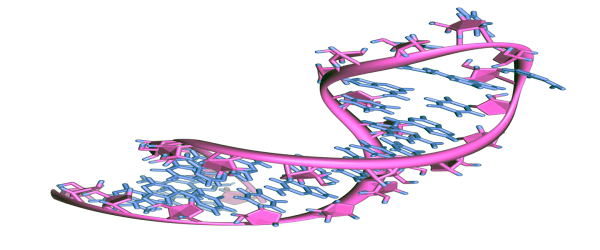
Red Pill or Blue? Carrying out science often involves many difficult decisions! I see it all the time in RNA protocols – the “gracious” option of using purified water or Tris-EDTA (TE) buffer to dissolve (or elute, if you are using column purification) RNA. When I was trained in assessing RNA using UV spectrophotometry, graduate…
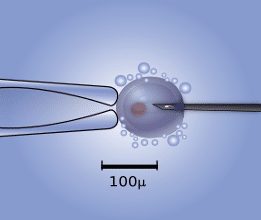
Read up on the various methods for delivering CRISPR reagents and how to choose between them.

The eBook with top tips from our Researcher community.